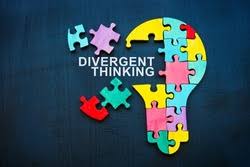Six Pathways of Scholarship: What Graduate Students Can Learn from How Knowledge Moves
Graduate students are taught to publish, but rarely to make their research move outside of the traditional academy space.
Real impact begins when knowledge travels — across audiences, systems, and forms.
Over the last decade, I’ve used six distinct pathways to carry my work on dyslexia, race, and giftedness beyond academia. Each one offers a model for how research can live in the world, not just in journals.
Figure 1. Moving Research Beyond Academia infographic, generated with OpenAI’s ChatGPT (DALL·E model) based on original text and design concept by S. A. Robinson (2025)
- Journal articles and edited volumes built academic credibility.
- Lesson: Peer review confirms rigor — but reach is limited. It’s the foundation, not the finish line.
2. Monograph and Dissertation
- My autoethnography documented the experience of being a gifted Black male with dyslexia.
- Lesson: Your lived experience is data. Use it to expand what counts as scholarship.
3. Instructional Publications
- Turning theory into decoding guides and pronunciation manuals made my work teachable.
- Lesson: Scholars should create tools people can actually use — not just theories others must interpret.
4. Community-Based Interventions
- Tutoring and correctional literacy programs tested the research in real time.
- Lesson: When theory meets practice, transformation happens.
- In just eight weeks of community-based tutoring, students demonstrated remarkable literacy gains—averaging the equivalent of one full year of growth in decoding, three-quarters of a year in reading comprehension, and one-quarter of a year in morphology. Between 60 and 72 percent of participants improved across all domains, indicating consistent upward trends despite individual variability. These results reflect accelerated literacy growth even without a control group, offering preliminary evidence that explicit pronunciation-symbol instruction is both feasible and promising as a tool for supporting adolescent readers outside of traditional school settings.
5. Public Thought Leadership
- Writing blogs and essays opened space for public conversation about literacy and equity.
- Lesson: If people can’t understand your work, it can’t serve them. Communication is scholarship.
6. Creative & Entrepreneurial Work — Most Impactful
- Through Doctor Dyslexia Dude, my research became storytelling — merging literacy, identity, and empowerment.
- Lesson: Innovation is dissemination, owning IP, awards, work cited, and global recognition.
Why This Matters for Graduate Students
Graduate programs teach research production, not knowledge movement. Your dissertation may earn a degree, but your pathways earn influence. Learning to publish, create, and communicate across multiple forms makes your research dynamic something that informs classrooms, communities, and even culture.
Because knowledge that doesn’t move doesn’t matter.
Sincerely,
Shawn Anthony Robinson PhD




Comments
Post a Comment